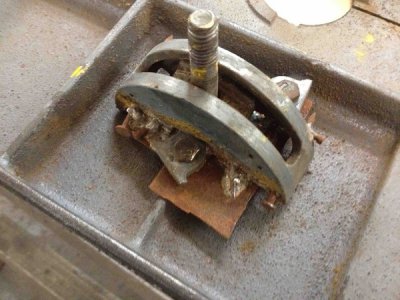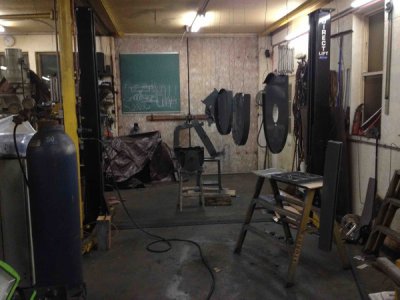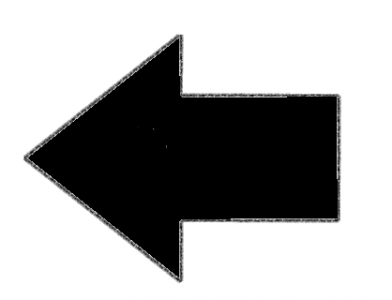-
Welcome back Guest! Did you know you can mentor other members here at H-M? If not, please check out our Relaunch of Hobby Machinist Mentoring Program!
- Forums
- THE PROJECTS AREA
- PROJECT OF THE DAY --- WHAT DID YOU DO IN YOUR SHOP TODAY?
- Project of the Day Mega-Thread Archives
You are using an out of date browser. It may not display this or other websites correctly.
You should upgrade or use an alternative browser.
You should upgrade or use an alternative browser.
2015 POTD Thread Archive
- Thread starter jumps4
- Start date
- Joined
- Aug 26, 2013
- Messages
- 1,061
I found small slitting saws (about 3 inches) on Ebay, in the neighborhood of 2 for 3.50 or so. One of them has cut half hard (RC35) 4140, albeit slowly.
That's where I ended up purchasing all mine from as well.
I was hopping to get some stuff done in the shop, but the UPS man literally left 2 different packages at depo according to the notifications/tracking info i got, so i have to wait till tomorrow.
- Joined
- Jul 9, 2014
- Messages
- 613
The aluminum is 2x2 angle, so it's drilled and then lagged into the studs in the walls, all 3 sides are lagged.
It's a pretty special shower, steam gen, viewing windows, glass partition and door, the glass goes from the tile to the ceiling, with a steam vent, there is a hand hammered copper soaking tub on the main bathroom, heated floors custom vanity, it's pretty awesome bathroom, to the tune of about 40 grand for the remodel, which included plus sizing the structure.
That looks very nice Chevvy .
Watch out for slime developing behind the metal frame despite using a daily spray on shower cleaner things eventually develop slime and moulds in hard to reach places . Fortunately I have a small live steam generator that I use on the first of every month to blast out any soapy residues & crud behind fittings anchored to the walls , same with the floor gully drain grid . This marine grade stainless grid has to get lifted , the waste trap insert taken out & cleaned as well as the stainless grid getting steamed clean on all dimensions
- Joined
- Jul 9, 2014
- Messages
- 613
chevydyl,
That looks awesome.
I have been wanting to build a bigger shower 48" x 72" but am reluctant to spend $600 on the pan for the floor.
How did you anchor it to the walls?
If it is a standard wooden floor ,you can put down a thick " balanced ( odd number of veneers ) " marine ply base and construct wall studding then coat it in a cement & fibre glass concoction boarding ( 19 mm thick & fastened to the cubicle frame work & floor with special sheradised board screws with a one way water proof membrane over the top ..
This membrane then gets skimmed over with a fine rubberized water proof cement & your ready for tiling things up .. This side of the pond it's called " Aqua board " & the membrane was I think called Deetra or Ditra
You lay the heated floor tape on top over the water proof floor membrane once it's taped in place measure the resistance etc .to ensure it is not faulty insitu . If OK carefully flood the area with another thick coat of cement to seal in & protect the tape/ heating cable ising soft rubber blades to move the cement around so as not to damage the heat cable /tape .
When it's dry in a few days time you measure the resistance of the cable again just to check as it's a bugger if you do all th expensive stuf only to find that the tape /cable has been damaged .
I used a very thick floor leveling compounded shape the actual wet area of floor into a slight dish tso it runs to the drain channel .
Did a bit of free hand sketching to work out heights right from the bathroom door so that there are no lips that will cause problems with a wheelchair or present any tripping hazards also to ensure that any water runs back inside the wet room to the drain channel .
I had to cut some thin & some thin long wedges of soft pine and used them as 1/4 inch tick screeding guides after painting them in melted wax ( allows easy removal ) before siting them & sticking them down in the right places with bits of " Five day Frog tape ".
The next day or so was spent carefully laying the shaped screed and left for a couple of days to dry.
It was so funny ,for I had to remove the bathroom door and set up a system of gangplanks so we could get to the toilet pan as we only had one loo in the home
Once dry the wooden spills were removed and I then started the floor tiling . Left it to dry a couple of days then used water proof rubberized grout to seal & grout them in .
another day or so . After this I covered the whole floor to almost the edges with two layers of very thick cardboard so I could tile the walls without damaging the floor .
As I did all the work myself I think it was just over $2,000 USD for all materials ( back in 1996 )
Last edited:
- Joined
- Jul 9, 2014
- Messages
- 613
Greg, years ago I had the same problem on an ancient American coronet crown multi station wood working machine . OK so it is a cast soft alloy table & bracket but the end result may interest you .Here's an innovative repair. (Not mine). Hadn't looked under the table of the bandsaw Im cleaning up till today. Appears at some point the zinc die cast quadrants that the table tilts on were broken. How do you repair a zinc die casting? Someone drilled cross holes through it, inserted common nails then soldered them to a steel backing plate and bolted them down. As crude as it looks it actually functions well, and may have been for decades. Im going to leave well enough alone for now, make new ones IF it ever fails.
Greg
I took the good one off the table , dipped it molten wax , to try and allow for expansion /contraction of hot metal cooling down & shrinking , covered it in thin food wrap to block holes and grooves then made a half & half cast out of Plaster of Paris ( with several locating devices gently drilled in one side face ) .
After four days of it siting in a warm airing cupboard to dry fully I took it apart , removed the bracket and scraped in four filling and air sprue's to ready it for casting . Bound it all back up with duct tape and then using a couple of melted down carburettors poured the casting & left it a couple of hours to cool/
It came out really well , I didn't take long to cut the slot , drill the holes and file /sand the shoulders round & base flat . The table sat well on the machine with only a few seconds of me scraping the shoulder for a quality face to face fit .
That was 30 years or more ago, done for my big bro & it's still a regularly used machine
Last edited:
- Joined
- Dec 2, 2012
- Messages
- 1,734
I see your practicing drawing resistor symbols, the European standard icon is a lot easier (although the wire wound look of the US symbol is nice, looks a lot like a coil though
Stuart
- Joined
- Mar 3, 2015
- Messages
- 171
F
f350ca
Forum Guest
Register Today
They were coils I was drawing. A chap and I were trying to figure out how Repulsive/Inductive motors work.I see your practicing drawing resistor symbols, the European standard icon is a lot easier (although the wire wound look of the US symbol is nice, looks a lot like a coil though)
Stuart
Greg
- Joined
- Dec 2, 2012
- Messages
- 1,734
They were coils I was drawing. A chap and I were trying to figure out how Repulsive/Inductive motors work.
Greg
Now that's just confusing
I need a chalk board, handy place for notes and musing's .
Stuart




